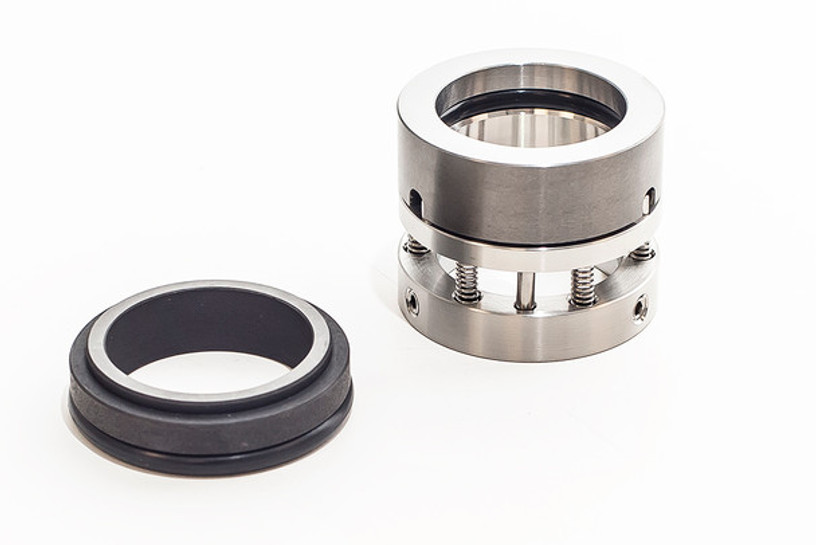In the world of industrial engineering, mechanical seals play a pivotal role in ensuring the efficient functioning of various machines and equipment. These seals, designed to prevent leakage of fluids and gases between moving parts, come in a variety of materials, each offering unique advantages and drawbacks. In this comprehensive guide, we'll delve into the types of mechanical seal materials, discussing their pros and cons to help you make informed decisions for your specific applications.
**1. ** Common Mechanical Seal Materials
1.1. Carbon-Based Materials: Pros:
- Versatility: Carbon-based materials, such as carbon-graphite, are highly versatile and can operate in a wide range of temperatures and pressures.
- Self-Lubricating: These materials have inherent self-lubricating properties, reducing friction and wear on the seal faces.
- Chemical Resistance: Carbon-based materials exhibit good resistance to many chemicals and corrosive fluids, enhancing their longevity.
Cons:
- Brittleness: These materials can be relatively brittle, making them susceptible to cracking or chipping under certain conditions.
- Thermal Conductivity: While carbon-based materials can handle high temperatures, their thermal conductivity might not be as high as some other options.
1.2. Ceramic-Based Materials: Pros:
- Hardness: Ceramics are incredibly hard and wear-resistant, making them suitable for high-pressure and abrasive environments.
- Dimensional Stability: Ceramic materials maintain their shape and dimensions even under extreme conditions, contributing to a longer seal life.
- Chemical Inertness: They offer excellent resistance to most chemicals, acids, and alkalis.
Cons:
- Brittleness: Similar to carbon-based materials, ceramics can also be brittle, making them vulnerable to sudden impact or shock.
- Fracture Risk: In applications involving dynamic loads or vibrations, ceramics might face a higher risk of fracturing.
**2. ** Specialized Mechanical Seal Materials
2.1. Tungsten Carbide: Pros:
- High Hardness: Tungsten carbide is renowned for its exceptional hardness and wear resistance, ensuring longevity in demanding environments.
- Thermal Conductivity: This material boasts excellent thermal conductivity, reducing the risk of overheating in high-temperature applications.
- Corrosion Resistance: Tungsten carbide is resistant to many corrosive substances, enhancing its durability.
Cons:
- Cost: Tungsten carbide can be relatively expensive compared to other materials.
- Brittleness: While it's harder than carbon-based materials, it can still exhibit brittleness under certain conditions.
2.2. PTFE (Polytetrafluoroethylene): Pros:
- Chemical Resistance: PTFE is highly chemically inert, making it an ideal choice for applications involving aggressive chemicals.
- Low Friction: This material has an extremely low coefficient of friction, reducing energy consumption and wear.
- Electrical Insulation: PTFE is an excellent electrical insulator, making it suitable for applications involving electrical equipment.
Cons:
- Limited Temperature Range: PTFE has a relatively low thermal stability, limiting its use in high-temperature applications.
- Abrasion Susceptibility: PTFE can be vulnerable to abrasive wear in certain conditions.
**3. ** Hybrid Mechanical Seal Materials
3.1. Carbon vs. Ceramic Hybrid: Pros:
- Combination of Properties: Carbon-ceramic hybrid seals offer a balance between the strengths of both materials, providing improved resilience and wear resistance.
- Enhanced Thermal Conductivity: The ceramic component enhances the thermal conductivity of the hybrid material.
Cons:
- Complex Manufacturing: Manufacturing hybrid seals can be more complex and potentially costlier than using a single material.
In conclusion, selecting the right mechanical seal material is crucial for the longevity and efficiency of industrial machinery. The choice depends on your specific operating conditions, such as temperature, pressure, fluid compatibility, and mechanical stress. Carbon-based materials and ceramics offer diverse benefits, while specialized materials like tungsten carbide and PTFE cater to unique requirements. For optimal performance, consider hybrid materials that combine the strengths of multiple options. By carefully evaluating the pros and cons of each material, you can make an informed decision that aligns with your application's demands, ensuring smooth operations and minimal downtime.
